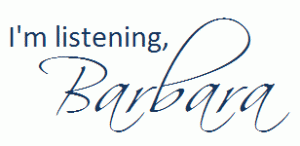 In September, my Corporate PR students at Georgia Southern University were given the One Week of Twitter Assignment. Most of the students started their adventures with Twitter a similar feeling. They typically had two types of confusion: confusion about how Twitter works and confusion about why there is any value in Twitter. One student even commented in class and in her blog, “At first I didn’t like it…I thought oh great another stalking tool.”
In September, my Corporate PR students at Georgia Southern University were given the One Week of Twitter Assignment. Most of the students started their adventures with Twitter a similar feeling. They typically had two types of confusion: confusion about how Twitter works and confusion about why there is any value in Twitter. One student even commented in class and in her blog, “At first I didn’t like it…I thought oh great another stalking tool.”
What did they get out of the assignment? Here are a few of their comments:
When I was first given the assignment I wasn’t quite sure what I had gotten myself into. However, I’m really glad that my Corporate PR professor had given us an opportunity to explore this GREAT social network. Twitter has taught me an entire new way to be connected to people. Reina Heard
I would definitely recommend becoming involved in Twitter; it is an experience that can help you gain contacts in the field that you are interested in as well as making an online reputation that will help you in the future. Megan Piper
My personal advice for anyone who hasn’t yet gotten into Twitter would be to join up, secure your username and play around with it for a while. Michael Tarver [NOTE: Take the time to click through and read Michael’s whole post, where he describes his impressions of Twitter’s possibilities, limitations and usefulness.]
Last week I was working on an important presentation and was having difficulty coming up with ideas to get the audience involved… so I turned to Twitter. I asked a direct question relating to audience involvement and within two hours I had four replies. I used the tips and my presentation was a success! Heather Atha
I have already made contacts through the site and Twitter is officially a part of my everyday life. I would recommend this site to anyone who is interested in networking and expanding their social horizons. Becoming an active tweeter has made me more interested in using other social media sites, and I am more involved online all together because of this experience. Kelli Martin
I used Twitter and my comment showed up on Current.com [during a presidential debate]! That’s exciting. William Foster
Using Twitter on my mobile allowed me to see immediate reaction of others on these topics. I found this especially fascinating; because as I viewed an event unfold I could watch others response to the event. This allowed to somewhat observe the cognitive faculties that are employed in one’s opinion formation process. Donovan Sharkey
Of course, not all the students found Twitter to be something they’d like to continue even after the assignment was over. Here’s one final comment that is similar to several criticisms that I read in their blogs:
I personally did not like Twitter because I have a hard enough time finding time to check my e-mail or my school account. I think Twitter is a wonderful networking site for the professional world but not for me at this point in my life. Lauren Jackson
Will I continue to use One Week of Twitter as an assignment in my public relations classes? Definitely. And do I recommend that my students continue to use Twitter? Definitely. [Students: See Twitter for College Students: 7 Tips Plus a Bonus.]
Questions about how I used this assignment?









